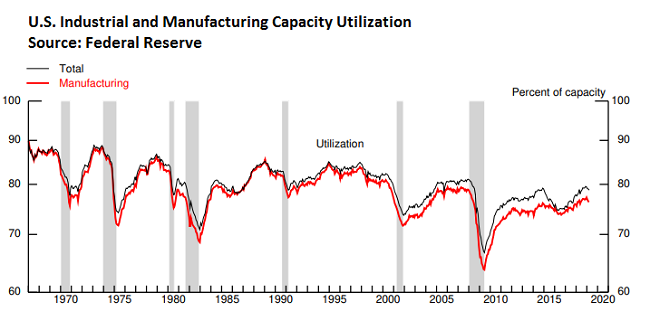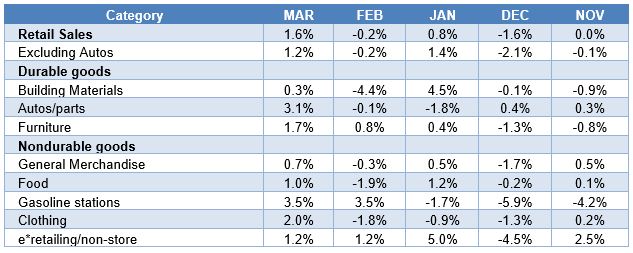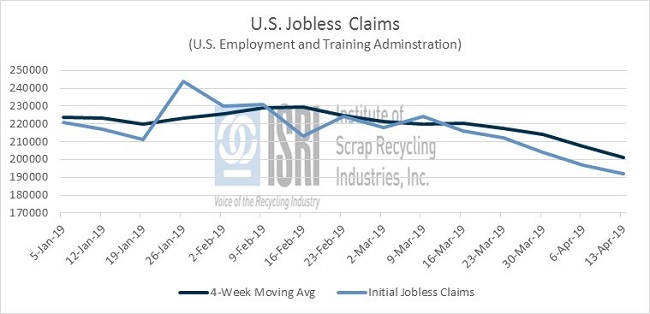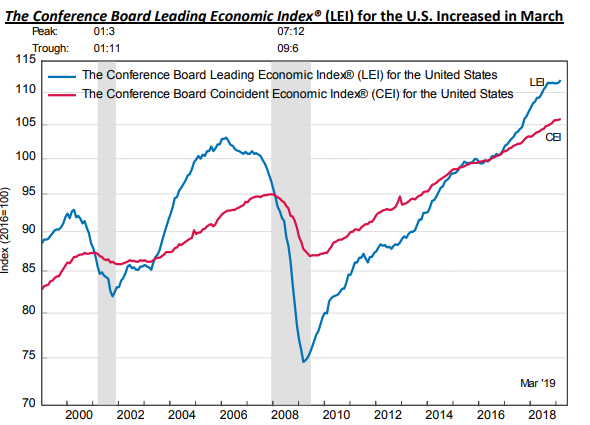U.S. industrial production unexpectedly slipped 0.1 percent in March against consensus expectations for a 0.3 percent gain according to figures released by the Federal Reserve last week.
Manufacturing production was also expected to rise 0.3 percent in March but instead came in unchanged. Overall capacity utilization, at 78.8 percent, came in three tenths of a percentage point below expectations.

Industrial sectors that saw declines in March included motor vehicles and parts (-2.5%), wood products (-2.2%), and plastics and rubber products (-0.9%). In contrast, U.S. retail sales growth came in stronger than expected at 1.6% in March following a 0.2% contraction in February as spending on most durable and nondurable goods picked up last month.

Jobless claims were 14,000 below the consensus expectation of 206,000 for the week ending April 13.

That’s consistent with the Conference Board’s index of leading economic indicators, which was up 0.4% in March. The Conference Board’s Director of Economic Research, Ataman Ozyildirim, explains: “The US LEI picked up in March with labor markets, consumers’ outlook, and financial conditions making the largest contributions… Despite the relatively large gain in March, the trend in the US LEI continues to moderate, suggesting that growth in the US economy is likely to decelerate toward its long term potential of about 2 percent by year end.”

On the other side of the Pacific, Chinese industrial production outpaced expectations and grew 8.5 percent in March. Shaking off the Lunar New Year slowdown, the month-on-month production growth rate was 1 percent. Chinese automobile production remained down at -2.6 percent but that’s still an improvement from the double digit declines of the previous few months. Chinese retail sales also outpaced expectations at 8.7 percent growth led by home improvement goods and communication equipment. Last but not least, China’s economy reportedly expanded 6.4 percent annualized in the first quarter, slightly above consensus expectations.
The International Monetary Fund (IMF) recently published their World Economic Outlook report for April 2019. Global economic activity began to slow down during the second half of 2018. Both domestic markets and international trade appeared to suffer at this time due to a wide variety of circumstances. China’s domestic growth slowdown also occurred as their government tightened the regulations to curb shadow banking and other off-book operations. Consumer confidence weakened in Europe but the effect had different results in certain economies. Germany suffered from a disruption in car production as new emissions standards created setbacks for them while investments declined in Italy as sovereign spreads widened. Heightening all of this were the trade tensions led by the U.S.-China trade war and what may be be a no-deal Brexit that has other economies scrambling for cover or hedging their bets as they broker deals nail down loose ends in their trade regimes.
Back to Main